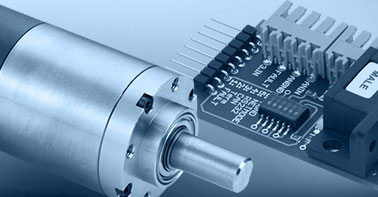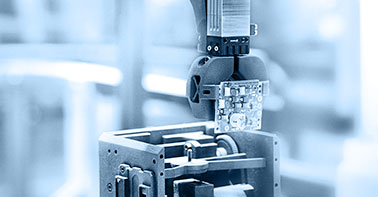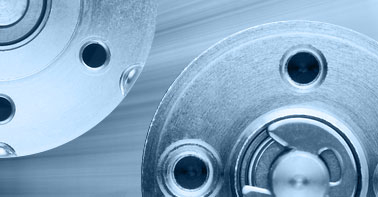- info@ems-ltd.com
- 0118 9817391
Home > PR > The future of neurosurgery in the robotic era
The future of neurosurgery in the robotic era
13/02/2025 - How advanced drive systems could revolutionise surgical robots
13th February 2025
Filed under:
Faulhaber, Brushless Dc Motors, Neurosurgery

What if the future of neurosurgery isn’t just in the hands of surgeons? Soon, surgical robots may hold the power to transform the field, making it faster, safer and more precise than ever before. This article explores the role of advanced motor design in the development of neurosurgical robots.
Surgical robots have already improved procedures such as appendectomies and colectomies in general surgery. Their precision leads to fewer complications, minimised scarring and quicker recovery times. However, neurosurgery presents an even greater challenge due to the delicate and complex structures of the brain and spinal cord.
Currently, robotic systems assist in some neurosurgeries, such as stereotactic procedures, which use imaging to position surgical instruments with minimal invasiveness. However, in most neurosurgeries today, surgical robots either play an assistive or non-existent role. So, what advancements would allow them to adopt more active roles in the field?
Sub-millimetre precision
Neurosurgery demands extreme accuracy, as even the slightest deviation could damage surrounding healthy tissue and result in impaired movement, sensory loss and cognitive deficits. Because of this, surgical robots must be exceptionally precise to be viable in neurosurgery.
Take surgical robot arms as an example. These can be used to hold tools steady in position or to perform cutting or suturing actions. The drive system of a robot arm needs to transmit exact, controlled motion to the robot joints, then to the grippers or other end effectors without any overshoot. Additionally, even when the robot arms are static, they need to continuously provide high torque, or holding torque, to retain absolute stability.
Brushless drives with integrated gears and encoders offer a promising solution. Brushless technology delivers smooth operation, high-resolution encoders enable sub-millimetre positioning and gears enhance torque output to ensure steady holding force even at a standstill. Advanced motor design with these integrated technologies will be crucial in developing surgical robots tailored to neurosurgery’s exacting demands.
Sense of touch
Another priority will be enabling reliable haptic feedback — the sense of touch — as this is critical for accurate force application. The human capability for tactile sensation allows surgeons to feel subtle changes in tissue resistance, helping them distinguish between healthy and abnormal tissue.
However, many current robotic systems lack the haptic feedback necessary to gauge the pressure and sensitivity needed for different actions. So, what will it take to integrate haptic feedback into surgical robots?
The drive system plays a core role in effectively delivering haptic feedback to the surgeon. Here, FAULHABER’s precise and compact micromotors such as the BX4 series could make a transformative difference. With responsive control, smooth torque and 4-quadrant operation, these cogging-free motors enable realistic feedback that helps the surgeon gauge the pressure to apply. The compact, high-power design of FAULHABER motors also allows for exceptionally precise drives without sacrificing size or manoeuvrability. In the delicate field of neurosurgery, this could open up the potential for more minimally invasive procedures that require sensitive, reliable feedback.
Rapid adaptability
The next leap for surgical robotics is autonomy. While current robotic systems primarily serve as highly controlled tools under a surgeon’s command, future systems could incorporate AI to handle specific tasks, such as retracting tissue, managing sutures or stabilising position in real time. This AI-driven dynamic adaptability would reduce surgeon workloads and improve patient outcomes with faster, safer surgeries.
Today, this might seem like something out of science fiction but rapid advancements in AI suggest it could be a reality for the neurosurgeons of tomorrow. Enhanced by machine learning, real-time data processing and advanced drives, the future of neurosurgery knows no bounds.
EMS is the exclusive distributor of FAULHABER motors and drives in the UK. To learn more about the motor solutions available for advanced robotics, contact a member of the team today.
- Categories / Tags
- 1024...SR
- AEMT
- AESL
- Acceleration
- Agriculture
- Agritech
- Autoclave
- BHS
- BHT
- BHx
- BLDC
- BP4
- BRC Series
- BX4
- BXT
- BeBionic
- Bearings
- Bespoke
- Brushed
- Brushed DC Motors
- Brushless
- Brushless DC Motors
- Brushless Dc Motors
- Brushless Motor
- Buhler
- Building Automation
- COVID
- CXR
- Catalogue
- Company Update
- Controller
- Coreless
- Coventry
- Custom
- Custom Design
- DC Motor
- DC Motor Supplier
- DMN
- Dc Motor
- Design
- Dimatech
- Drones
- EDS
- EMS
- EMS News
- EV
- Encoder
- Ewellix
- Exoskeleton
- Expo
- FAULHABER
- Factory
- Faulhaber
- Flat
- GPT
- Galil
- Gearhead
- IEF3
- IMC
- Industry 4.0. Blog
- Inspection
- KAG
- LL06
- LM
- LVC
- Laboratory Automation
- Linear
- Linear Actuator
- Logistics
- M50
- M80
- MC3
- Maintenance
- Manufacturing
- Mechatronics
- MedTech
- Medical
- Medical Devices
- Medical Imaging
- Medtech
- Merkel
- Motion Control
- Motor
- Neurosurgery
- New
- Nidec
- Nidec Servo
- Optical
- Pain Relief
- Piezo
- Piezomotor
- Pipeline
- Planetary
- Planetary Gearheads
- Point Of Care
- Precision
- Precistep
- Process
- Production
- Quickshaft
- Robot
- Robotics
- Robots
- SKF
- SR Series
- Samples
- Small DC Motor
- Software
- Space
- Sponsorship
- Stepper
- Stepper Motor
- Stepper Motors
- TMS
- Testing
- Trade Show
- 1016
- 1660
- 1935
- 2017
- 2018
- 2020
- 2021



